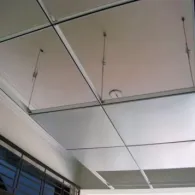8 月 . 14, 2024 08:16 Back to list
Understanding the Benefits and Installation Process of Drop Ceiling Access Panels for Easy Maintenance
Understanding Drop Ceiling Access Panels A Comprehensive Guide
In modern construction and interior design, the use of drop ceilings has become increasingly popular. This architectural feature provides an aesthetic appeal while also offering practical benefits such as hiding ductwork, pipes, and electrical wiring. However, one critical aspect that often goes overlooked is the incorporation of access panels. This article delves into the importance of drop ceiling access panels, their various types, and their installation applications.
What are Drop Ceiling Access Panels?
Drop ceiling access panels are specialized openings integrated into suspended ceiling systems. They serve as entry points to void spaces above the ceiling, allowing for easy maintenance and inspection of systems like HVAC, plumbing, and electrical components. These panels are designed to blend seamlessly with the surrounding ceiling, ensuring that they do not disrupt the overall aesthetic of the space.
Types of Access Panels
There are several types of drop ceiling access panels available on the market, each suited to specific applications
1. Standard Access Panels These are the most common type and are available in various sizes and finishes. They usually feature a simple latch mechanism for easy opening and closing.
2. Fire-Rated Access Panels For areas that require compliance with fire safety regulations, fire-rated access panels are essential. These panels are constructed with fire-resistant materials and are designed to withstand high temperatures for a specified duration.
drop ceiling access panel

4. Insulated Access Panels These panels are often used in areas where temperature control is necessary. Insulated access panels help maintain thermal efficiency, making them ideal for energy-conscious designs.
Importance of Installing Access Panels
The primary reason for including access panels in drop ceilings is convenience. They provide quick and efficient access to above-ceiling infrastructure, which is particularly important for commercial and institutional buildings where routine maintenance is a necessity. Without access panels, maintenance personnel would have to remove entire ceiling tiles or panels, leading to additional labor costs and potential damage to the ceiling structure.
Moreover, access panels contribute to the overall safety and functionality of a building. They facilitate easy inspections of systems that require regular monitoring, such as fire suppression systems and electrical wiring. In emergencies, having readily accessible utility spaces can make a significant difference in response time.
Installation of Drop Ceiling Access Panels
Installing access panels in a drop ceiling requires careful planning and precise execution. The first step is to identify strategic locations where access is necessary, taking into account the layout of the utilities above the ceiling. After determining the locations, the installer will ensure that the panels do not interfere with the structural integrity of the ceiling.
Once the locations are marked, the installation involves cutting the ceiling tile to fit the size of the access panel. Most drop ceiling access panels come with a frame that is secured to the grid system, ensuring stability. Following installation, the cover of the access panel is attached, completing the project while maintaining a seamless look with the surrounding ceiling.
Conclusion
In conclusion, drop ceiling access panels are an essential component of modern construction, particularly in commercial and institutional settings. They provide critical access for maintenance and inspection, ensure compliance with safety standards, and enhance the overall functionality of a building. By understanding their types and installation process, property owners and managers can make informed decisions that contribute to the longevity and efficiency of their infrastructure. Investing in high-quality access panels not only saves time and effort in maintenance but also supports the architectural aesthetics of the space.
-
Revolutionizing Interior Design with Ceilings t grid Suspended SystemNewsOct.29,2024
-
Revolutionizing Ceiling Design with ceiling access panel with Gypsum Tile WaterproofNewsOct.29,2024
-
Revolutionizing Interior Design with PVC Gypsum Ceiling: A Comprehensive GuideNewsOct.29,2024
-
Elevating Interior Design with High quality Mineral Fiber Ceiling TilesNewsOct.29,2024
-
Revolutionizing Interior Design with PVC Gypsum Ceiling: A Comprehensive GuideNewsOct.29,2024
-
Elevating Interior Design with High-Quality Mineral Fiber Ceiling Tiles: A Comprehensive GuideNewsOct.29,2024







